INTEROPERABILITY: ACHILLES HEEL OR THE SPECIAL SAUCE
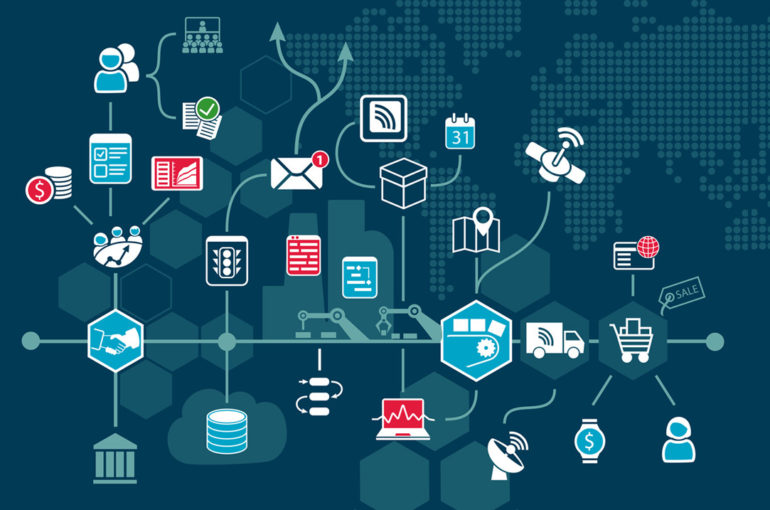
Everyone from supply chain to healthcare is talking about Interoperability, or the ability of information systems to work together within and across organizational boundaries, by enabling different information technology systems, and software applications to communicate, exchange data, and use the information that has been exchanged.
“The dream is to have interoperability between networks. Why is it needed? Business leaders now manage a value chain, not a simple supply chain within their four walls. They need interoperability between networks and technology applications. They know that a traditional focus on standards and integration does not work.
The elephant in the room is interoperability. There is friction in the process of data exchange. Investments in ERP are not the answer.” ~ Lora Cecere, Founder of Supply Chain Insights
Interoperability is one of the most difficult and pressing challenges and opportunities as Lora Cecere pointed out. It can be the Achilles heel that prevents progress or can be the special sauce that will enable the hype to deliver value digital revolution / Industry 4.0
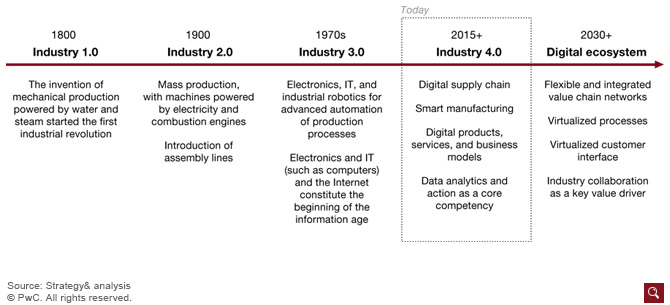
“But because data is arriving from many different sources — suppliers, transporters, warehouses, distributors — quality and interoperability of the data is critical, and still a significant technological barrier that a wide range of companies are working on.” ~ PwC
Our industry’s traditional culture is competition, not collaboration. There exists a host of reasons why implementing network interoperability successfully is considered difficult. Lack of consistent data standards, system incompatibility, to the cost perspective, designing the network architecture for interoperability implies the willingness to accept the complex set of benefits and associated liabilities. And the market and regulators are far from starting any work on it. Although significant strides have been made to support interoperability, the widespread adoption of standards to date has been slow, due to the challenging complexity and the fact that many of the legacy business models are based on closed systems and data capture rather than open digital ecosystems.
“Adding to the challenge is the disincentive today’s technology “giants” (e.g. Google, Apple, Microsoft, IBM, etc.) have to create interoperability, in which open standards undermine the competitive advantage(s) they are each trying to create. Each of these companies has big dollars and big plans supporting their individual, proprietary operating systems, equipment, and protocols. To build bridges (standards) with other systems inherently lessens their differentiation.”
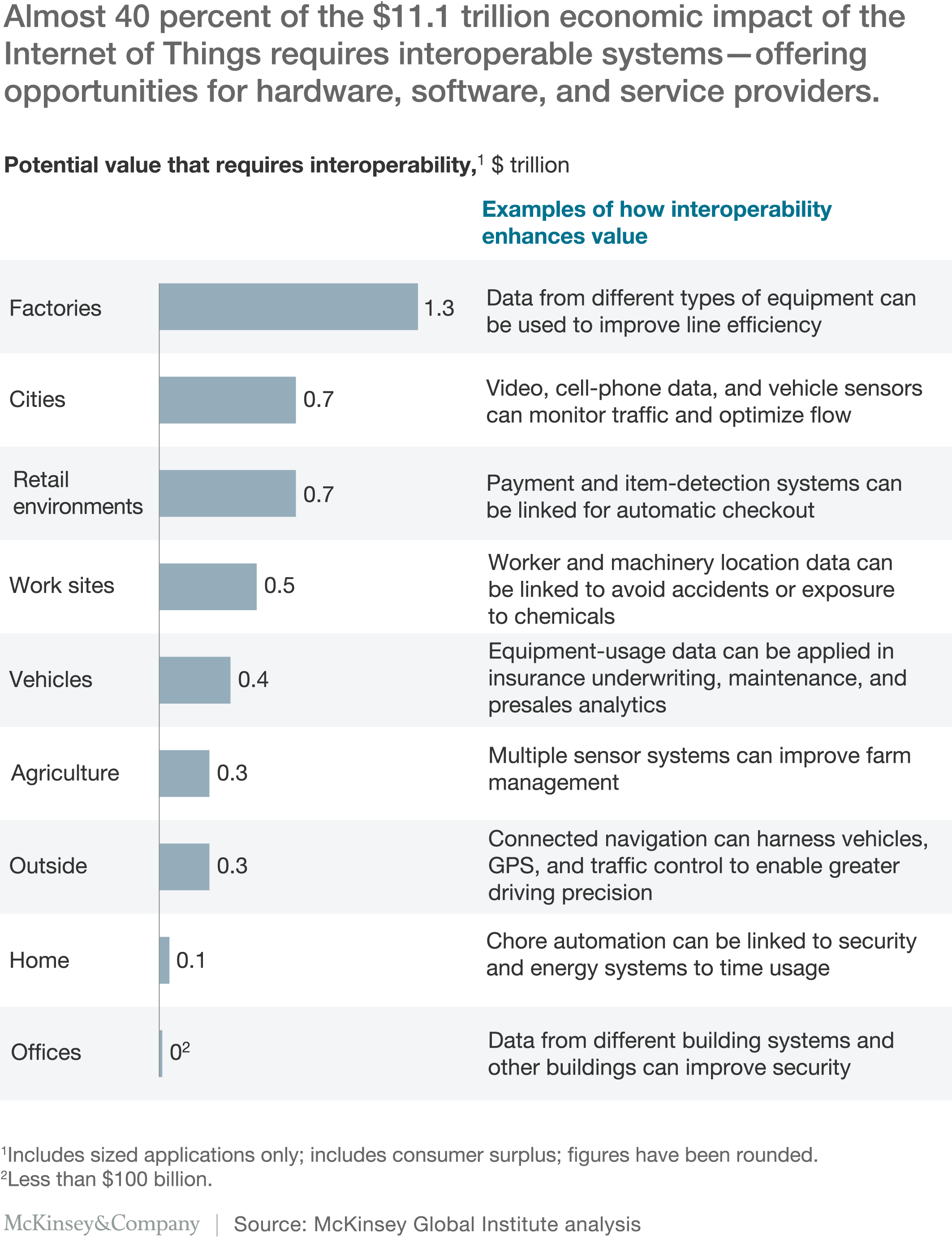
This challenge is underscored because those companies in whom consumers are already invested are likely to maintain their walled gardens. “We have an Apple Internet of Things and a Google Internet of Things,” explains Rachel Kalmar, Data Scientist at Misfit Wearables. Instead of opening infrastructure horizontally, the giants are only contributing to its fragmentation by creating vertical stacks of integrated products.
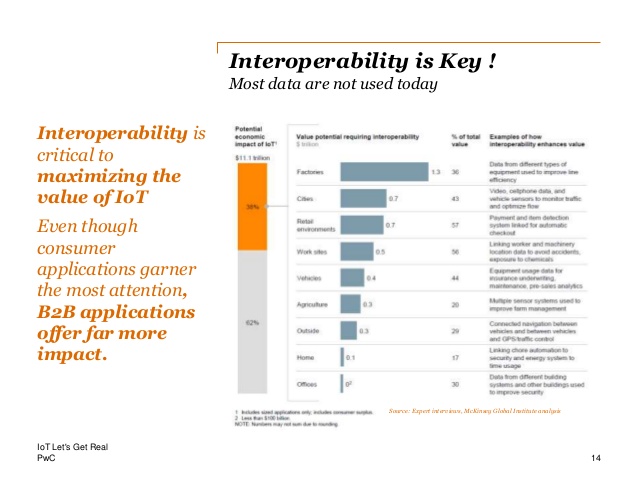
“The vision is that connectivity between people, processes, and things works no matter what screen type, browser, or hardware is used. The reality, however, is that the IoT is fragmented and lacks interoperability; disparate or overlapping solutions can’t easily “talk” (connect) to each other.”
“Visibility as a topic is confusing. Technology vendors have conflicting definitions. The current state is pretty Powerpoints with hollow words bandied about in sales cycles. It is messy. As shown in Figure 1, currently there are large gaps for the line-of-business user. Despite the advancements in B:C processes, we have made little progress in the advancement of B:B processes. Most hang on the back of 40-year old Electronic Data Interchange (EDI) processes.”
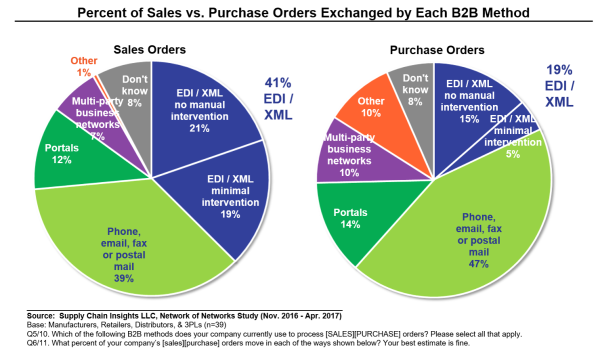
For the industry, the larger elephant is “What is the Return on Investment?” While companies know that they need to conquer this hurdle, they are hamstrung. Process innovation with new technologies is hamstrung by the need to show a definitive ROI.” Lora Cecere, Founder of Supply Chain Insights
Take the healthcare industry’s interoperability challenge as an example. “You’ve got Fitbit, Apple Watch, all of this consumer tech collecting data on your blood pressure, heart rate, etc,” said Forde. “Then you go to the hospital or your doctor and they have their own system. You see the allergist and they’ve got their own system, and none of it is connected. If there’s no interoperability between any of these systems, how are you going to get the best possible care?”
Reducing barriers to information flow would benefit not only consumers but also other actors in the supply chain, such as producers, retailers, distributors, and certifiers. Well-known benefits include, for example, reductions of costs of coordination and increased flexibility (Clemons & Row, 1993).
Everyone is talking about how to realize Industry 4.0. We have got blockchain, IoT, cloud computing, all of these very promising smart technologies, yet we have the challenge with interoperability and it will only grow as the latest smart technologies generate significantly more data from a wider variety of sources. How can we begin on the path towards interoperability? As Brian Tessier mentioned at the conference, the good news is that more and more companies and products are beginning to emerge that enable interoperability through open-source development.
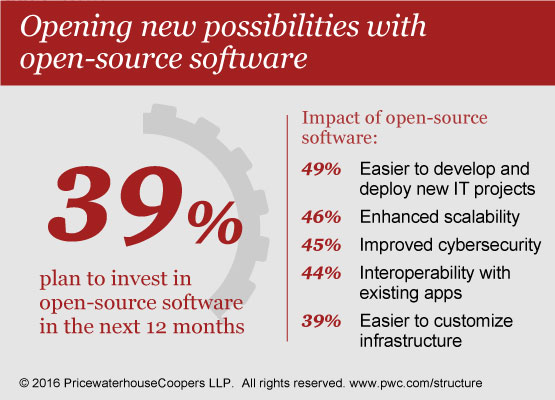
“Overcoming the challenge of interoperability may be the single most important hurdle for Industry 4.0, as it is what enables the boundless connections of a connected world. More and more companies and products are beginning to emerge that enable interoperability through open-source development.”
As the challenges of interoperability finally seem to be fully understood, the huge gap between plans and reality in this field is also recognized. A major shift in organization practice and structure will be required. I think we should stop talking about it and actually start achieving it.
What are your thoughts on interoperability ? Any comments gladly appreciated.
Tim Gray

Post Views: 2,745
